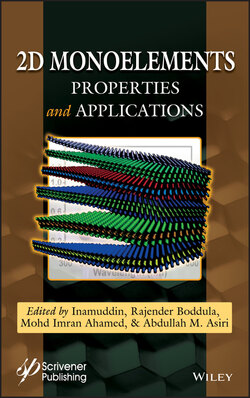Читать книгу 2D Monoelements - Группа авторов - Страница 20
1.2.2.3 Elastic Parameters
ОглавлениеThe elastic properties of phosphorene are also very anisotropic since the Young values in AC-axis (x-direction) is four times lower than the one along the zigzag axis (y-axis), as indicated by the polar diagrams of Υ(θ) illustrated in Figure 1.5a [23, 55]. Notice that the weakest P-P bond strength is the main cause of these small values of the Young parameter [22], compared to 1 TPa and 270 GPa reported for graphene and MoS2, respectively. Furthermore, the Poisson’s ratio, namely, 0.73 and 0.165 in the AC and ZZ directions, respectively, confirms also the high anisotropy in phosphorene [56]. However, the negative value observed in the small interval [5π, 10/3π] as displayed in Figure 1.5b reveals that the material is auxetic. More precisely, for some particular stretch, phosphorene shows a lateral extension instead of longitudinal elongation as it is the case for conventional materials [57, 58]. Besides this, both the shear and compressional acoustic waves propagate more rapidly in the ZZ-axis as it is clearly deduced from the polar plot of the speed of sound in Figure 1.5c. Same anisotropic behavior is found for Debey temperature that is half times lower (see Figure 1.5d).
Besides the strong anisotropy of the elastic parameters, phosphorene exhibits a high elasticity compared with other monolayer materials such silicene, borophene MoS2, and graphene [59]. Indeed, without breaking phosphorene can withstand large tensile strains along its two possible directions [23]. Whereas, MoS2, for example, can only withstand deformation up to 13%. At 300 K and under a small magnitude of strain (E), Figure 1.6 depicts small ripples on the flat surface of phosphorene. When the compressive E grows, the buckling parameter increases. Interestingly, phosphorene maintains its structural stability in AC-axis at large compressive force up to 80%, but it breaks along the ZZ direction for a 17% deformation, which reveals the super flexible character of this material [60].
Figure 1.5 Polar plot of (a) Young modulus in J/m2 and (b) positive and negative values of Poisson ratio, (c) speed of sound in km/s of pure phosphorene.
Figure 1.6 Monolayer phosphorene under different values of in-plane compressive strain at 300 K in the two directions.
